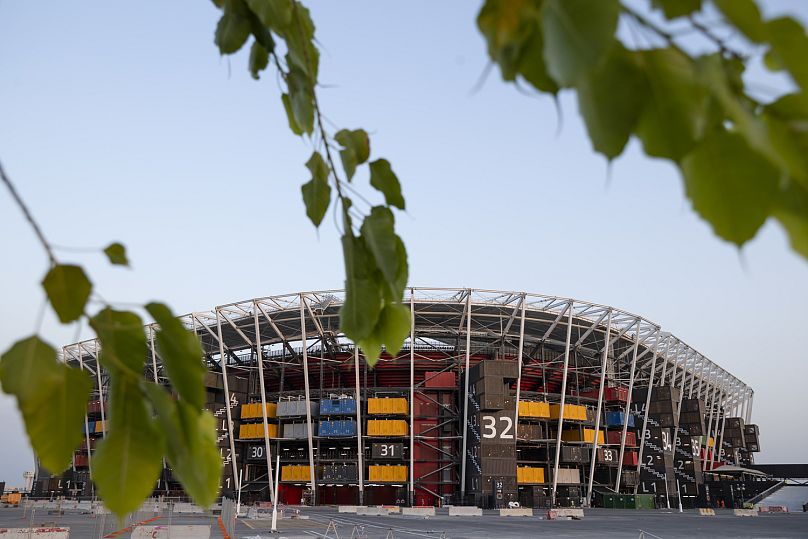As part of Euronews' Green Week, Football Now looks at the world's water problem and whether the sport can do more to help combat the issue.
FOOTBALL NOW is a new show that brings to light some of the global game's biggest issues, challenges, and debates.
Nearly a third of people in Europe are affected by water stress each year, threatening the health and development of communities across the continent. Climate change will only exacerbate the problem, meaning new ways of managing and consuming this precious resource are desperately needed. Euronews is exploring the Future of Water during our 2022 Green Week.
How can football help the cause?
The climate crisis continues to be one of if not the greatest threat to humanity. The global game must do its part to help the planet, as football is the most-watched sport in the world and can often be a driving force for positive change. Inefficient energy systems can be replaced with more environmentally friendly ones, saving clubs money in the long run.
This week on Football Now, we are asking if football has a water issue and how it can it can help the cause going forward. According to the Economic Times, a full-sized grass pitch uses up to 100,000 litres of water per day. Could a synthetic pitch be the ultimate solution? Possibly not because artificial turf absorbs, retains and emanates heat that is harmful to the environment.
"I think it's a massive issue." Says Barney Weston, founder of Football For Future.
"I mean, football uses water in lots of different ways, whether it's watering grass pitches, whether it's in water bottles for the players and fans, or food and drink. It's a problem that we do need to tackle. I think fans particularly don't necessarily realise how much water is consumed in football because the only time you see that is when pitches are being, you know, watered at halftime or perhaps in advance of the game or afterwards."
World Cup 2022
The upcoming World Cup offers Qatar the chance to showcase its environmental efforts as the host of the first-ever carbon neutral competition. The groundbreaking stance can be seen at Stadium 974. A fully demountable arena made up of 974 shipping containers.
Sustainability Director at Supreme Committee for Delivery and Legacy, Bodour Al Meer, outlines how they aim to conserve water throughout the games.
"All our stadium reduces the water consumption by 40%. We use desalinated and condensation water from the air-conditioning units for the irrigation system. We also use treated sewage water for use in irrigation.
So it was essential for (Qatar) to think about ways to reduce the amount of water to be used at the design stage of the stadiums."
Club partnerships: an opportunity to get to the heart of the issue
Many football clubs rely on partnerships with local, national and even international businesses for revenue. Manchester City was the first Premier League team to join forces with water technology company Xylem. They announced their partnership to raise awareness about global water solutions.
"It's been great. We're very proud of this partnership. And it has really helped us to channel our message to the right viewership and the right audience. There are a lot of people that love football, a lot of people that love Man City. And so it's a powerful platform for us to put forward our message."
City's and Xylem's partnership was implemented at the start of the 2021/22 season when they a released water-inspired away shirt as part of the Be A Water Hero campaign. Compared to standard football shirts, they use a technology that reduces water consumption.
"We're very proud of the away kit. Not only to have the right messaging around our water safety and water conservation. But even the way it's been designed and manufactured. So we're using a special dope dye manufacturing process, which uses much less water. And we insisted on that. We made sure that we've done our part even as we conduct this messaging and that we've used the right processes in manufacturing this year. And it's been a great success. It's one of the more successful kits that Manchester City consumers on the websites have got." Skaf says.
As Euronews highlighted recently water projects receive less than 2% of all public and private climate finance. Support from the current Premier League champions and a potentially sustainable World Cup suggests football is moving in the right direction. Globally, however, there is always more to be done to address the climate crisis.














